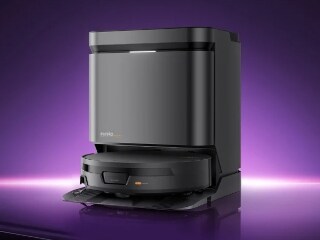- Home
- Laptops
- Laptops News
- MacBook Pro 2016's Touch Bar Said to Be Controlled by a Secondary ARM Processor
MacBook Pro 2016's Touch Bar Said to Be Controlled by a Secondary ARM Processor

When Apple launched its new 2016 MacBook Pro models last week, all attention was clearly on the Touch Bar, a new multi-touch controller surface which changes dynamically to offer context-relevant tools, and can be interacted with in a variety of ways. As more details of how it works emerge, TechCrunch has confirmed that it takes advantage of hardware and software derived from the Apple Watch, including a custom ARM-based processor and watchOS itself.
TechCrunch cites tweets by developer Steve Troughton-Smith as well as additional research that back up his findings. Apple announced that Touch ID on its new MacBook Pros is implemented using the same Secure Enclave architecture that it uses on iPhones, but now integrated into a new custom T1 processor, derived from the S2 which powers current Apple Watch models.
The primary OS and CPU are never involved when accessing secure data, such as when authenticating an Apple Pay transaction with a fingerprint - in the case of the iPhone, that means one of Apple's own A-series SoCs and iOS, whereas now Intel x86 CPUs and macOS can also be bridged. Fingerprint patterns are stored only within the Secure Enclave, and it is paired to the parent device with a unique identifier at the time of manufacture, which means separating the two will cause Touch ID to stop working - and also means that replacing parts might result in a loss of functionality.
The Touch Bar essentially runs its own embedded OS, which is derived from watchOS. The main computer generates graphics for it and reacts to its touch inputs, which are sent and received over USB just as any input/output peripheral would. Troughton-Smith theorises that the Touch Bar could therefore work as an independent device even when the MacBook Pro is turned off.
Apple has long been rumoured to be working on more powerful versions of its iOS devices' A-series chips to replace the Intel processors in some if not all of the Mac lineup. Apple has also famously resisted using touchscreens on its desktops and laptops, clearly delineating its Mac and iOS philosophies. This approach shows that Apple has brought the two together in ways that serve specific purposes.
Touch Bar debuted with the new MacBook Pro 2016. It is not currently available on any other models, but if Apple wants to establish common conventions across its product lines and keep developers motivated to support it, a standalone keyboard for at least the Mac Pro should launch soon. However, the feature has pushed the price of the MacBook Pro 2016 up considerably, compared to the non-Touch Bar model as well as the previous generation, which was introduced in 2012.
We discussed everything you need to know about the new MacBook Pro on Orbital: The Gadgets 360 Podcast. You can either subscribe via iTunes or RSS or just hit the play button below.
Catch the latest from the Consumer Electronics Show on Gadgets 360, at our CES 2026 hub.
Related Stories
- Samsung Galaxy Unpacked 2025
- ChatGPT
- Redmi Note 14 Pro+
- iPhone 16
- Apple Vision Pro
- Oneplus 12
- OnePlus Nord CE 3 Lite 5G
- iPhone 13
- Xiaomi 14 Pro
- Oppo Find N3
- Tecno Spark Go (2023)
- Realme V30
- Best Phones Under 25000
- Samsung Galaxy S24 Series
- Cryptocurrency
- iQoo 12
- Samsung Galaxy S24 Ultra
- Giottus
- Samsung Galaxy Z Flip 5
- Apple 'Scary Fast'
- Housefull 5
- GoPro Hero 12 Black Review
- Invincible Season 2
- JioGlass
- HD Ready TV
- Laptop Under 50000
- Smartwatch Under 10000
- Latest Mobile Phones
- Compare Phones
- Motorola Signature
- Vivo Y50e 5G
- Vivo Y50s 5G
- Realme 16 Pro+ 5G
- Realme 16 Pro 5G
- TCL Nxtpaper 70 Pro
- OPPO A6 Pro 5G
- Honor Power 2
- Zephyrus Duo 16 (2026)
- Asus ROG Zephyrus G16 (2026)
- Realme Pad 3
- OPPO Pad Air 5
- Xiaomi Watch 5
- Huawei Watch 10th Anniversary Edition
- Acerpure Nitro Z Series 100-inch QLED TV
- Samsung 43 Inch LED Ultra HD (4K) Smart TV (UA43UE81AFULXL)
- Asus ROG Ally
- Nintendo Switch Lite
- Haier 1.6 Ton 5 Star Inverter Split AC (HSU19G-MZAID5BN-INV)
- Haier 1.6 Ton 5 Star Inverter Split AC (HSU19G-MZAIM5BN-INV)

















